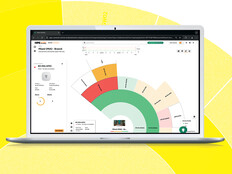Public Venues Are the Obvious Beneficiaries of Wi-Fi 7
Where we’re seeing the most potential right now is in large public venues and high-density areas, such as transit hubs, arenas and downtown public Wi-Fi zones. People expect strong, reliable connectivity in those places, and Wi-Fi 7 delivers on that expectation. Community centers, transit facilities, state offices, parks and other publicly managed spaces that have not yet upgraded to Wi-Fi 6E would be well advised to spring for Wi-Fi 7.
In Seattle, for example, we’ve seen interest driven by events such as the upcoming 2026 FIFA World Cup, where connectivity can make or break the user experience.
It’s also worth noting that for new construction projects in particular, it makes sense to plan for Wi-Fi 7. At some point, it will become the industry standard, so it’s better to build in future-ready infrastructure rather than retroactively upgrade.
RELATED: Improve college stadium security and connectivity with advanced technologies.
Public Safety and Transit Have the Most Urgency Around Wi-Fi 7
The most pressing case for Wi-Fi 7 is in public safety and emergency response. First responders need real-time access to video from transit systems such as buses, trains, surveillance networks and body cameras. Wi-Fi 7 can make a meaningful difference over Wi-Fi 6E for these types of use cases. For example, it enables faster video offload when vehicles return to their garages or officers complete a shift, which matters when you’re processing hours of high-resolution footage.
The speed itself is convenient, but Wi-Fi 7 can also enhance real-time situational awareness, leading to better law-enforcement outcomes. Quicker access to data in the field can ultimately help officers and first responders make more timely, well-informed decisions.
We’re also seeing Wi-Fi 7 being considered for drones and sensor-rich transit systems where large volumes of data need to be analyzed and acted on quickly.
EXPLORE: Law enforcement agencies are deploying artificial intelligence.
In Some Cases, Wi-Fi 6E Will Be the Smarter Interim Move
Those benefits aside, Wi-Fi 7 isn’t a prerequisite across the board right now.
Device infrastructure isn’t universally compatible with Wi-Fi 7. For example, many Internet of Things devices still rely on 2.4GHz networks and low-bandwidth protocols. Even if they could access the 6GHz band, a lot of those devices don’t need the speed Wi-Fi 7 offers. More to the point, they may not support the WPA3 security standard required to connect.
Additionally, the 6GHz spectrum used in Wi-Fi 7 doesn’t propagate as well through walls or over long distances. That means more access points, more cabling and potentially more upgrades to network switches may be required. We always recommend a proper site survey before making any changes, especially when working with modern spectrum.
For general office environments with older endpoints or slower refresh cycles, jumping straight to Wi-Fi 7 may not make financial sense just yet.
If you’re still running on Wi-Fi 5 or early Wi-Fi 6 gear, Wi-Fi 6E still can offer substantial value. It introduces access to the 6GHz band without the full cost or licensing jump of Wi-Fi 7. Plus, some of your newer devices may already support it.
Refresh timelines are a big factor here. If you're replacing your endpoints in the next year or two, investing in Wi-Fi 7 will pay off much faster. If you’ve recently completed a refresh and most devices won’t support Wi-Fi 7 for several years, Wi-Fi 6E could be a more cost-effective upgrade, especially since Wi-Fi 8 could come onto the scene as early as 2027 or 2028.
Click the banner below to sign up for the StateTech newsletter for weekly updates.













